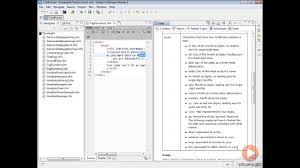Mastering ColdFusion Development: Building Dynamic Web Applications with Ease
The Power of ColdFusion Development
ColdFusion is a powerful and versatile programming language that has been used for web development since its inception in the late 1990s. Developed by Adobe, ColdFusion allows developers to create dynamic and interactive web applications with ease.
One of the key advantages of ColdFusion is its simplicity and ease of use. Developers can quickly build robust web applications using its intuitive tag-based syntax, making it an ideal choice for rapid application development.
Another strength of ColdFusion is its seamless integration with other technologies. Whether you need to connect to databases, interact with web services, or work with various file formats, ColdFusion provides built-in functionalities that simplify these tasks.
Moreover, ColdFusion offers a wide range of features that enhance productivity and efficiency in development. From session management and form validation to charting and reporting capabilities, ColdFusion equips developers with tools to streamline the development process.
With its scalability and performance optimization features, ColdFusion is well-suited for building enterprise-level applications that can handle high traffic loads and complex functionalities. Its robust security features also ensure that sensitive data remains protected from potential threats.
In conclusion, ColdFusion development continues to be a popular choice for businesses looking to create dynamic and feature-rich web applications. Its versatility, ease of use, and powerful capabilities make it a valuable tool for developers seeking efficient solutions for their projects.
Top 5 Tips for Effective ColdFusion Development
- Use ColdFusion components (CFCs) to organize your code and promote reusability.
- Take advantage of built-in functions and tags in ColdFusion to streamline development.
- Optimize database queries for better performance by using CFQuery parameters and caching.
- Follow best practices for security, such as validating user input and protecting against SQL injection attacks.
- Stay updated with the latest versions of ColdFusion to leverage new features and improvements.
Use ColdFusion components (CFCs) to organize your code and promote reusability.
Using ColdFusion components (CFCs) is a highly effective tip in ColdFusion development to organize your code and encourage reusability. By structuring your code into CFCs, you can modularize your application logic, making it easier to manage and maintain. CFCs allow you to encapsulate related functions and data, promoting a more structured and scalable approach to development. Additionally, leveraging CFCs enables you to reuse code across different parts of your application, saving time and effort while maintaining consistency throughout your project.
Take advantage of built-in functions and tags in ColdFusion to streamline development.
To optimize your ColdFusion development process, it is highly recommended to leverage the built-in functions and tags available within the language. By utilizing these pre-existing tools, developers can streamline their workflow, reduce coding time, and enhance the overall efficiency of their projects. ColdFusion’s extensive library of functions and tags simplifies common tasks such as data manipulation, form validation, and session management, allowing developers to focus more on building robust and feature-rich web applications rather than reinventing the wheel. Embracing these built-in functionalities not only accelerates development but also ensures code consistency and reliability throughout the project.
Optimize database queries for better performance by using CFQuery parameters and caching.
To optimize database queries for improved performance in ColdFusion development, it is essential to leverage CFQuery parameters and caching effectively. By utilizing CFQuery parameters, developers can enhance query execution efficiency and mitigate the risk of SQL injection attacks. Additionally, implementing caching mechanisms helps reduce database load by storing query results temporarily, thereby speeding up subsequent data retrieval processes. Incorporating these practices not only boosts application performance but also contributes to a more secure and responsive user experience.
Follow best practices for security, such as validating user input and protecting against SQL injection attacks.
It is crucial to follow best practices for security in ColdFusion development, such as validating user input and safeguarding against SQL injection attacks. By implementing proper input validation techniques, developers can ensure that data entered by users is sanitized and free from malicious code that could compromise the integrity of the application. Additionally, protecting against SQL injection attacks involves using parameterized queries and stored procedures to prevent unauthorized access to the database. Adhering to these security measures enhances the overall robustness and reliability of ColdFusion applications, safeguarding sensitive information and maintaining a secure environment for users.
Stay updated with the latest versions of ColdFusion to leverage new features and improvements.
Staying updated with the latest versions of ColdFusion is crucial for developers looking to maximize the benefits of this powerful programming language. By keeping abreast of new releases, developers can leverage the enhanced features and improvements that come with each update. Whether it’s improved performance, new functionalities, or security enhancements, staying current with ColdFusion versions ensures that developers can take full advantage of the latest tools and capabilities to enhance their development projects.




